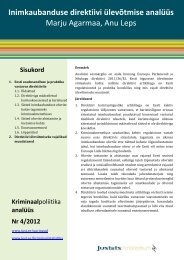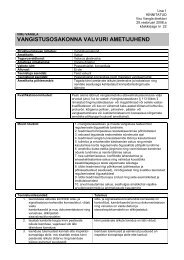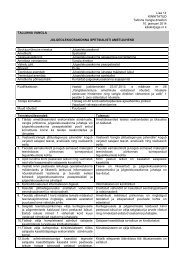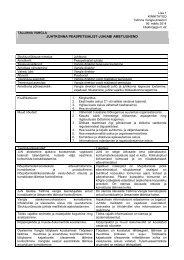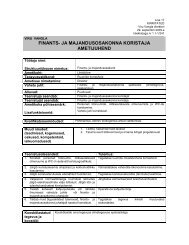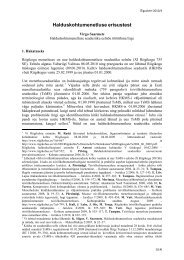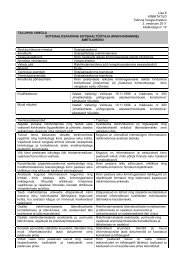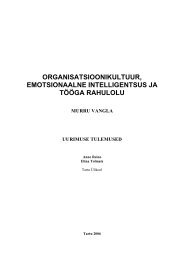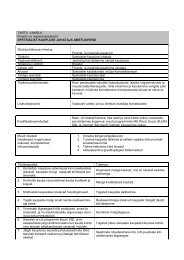11. Retsidiivsus Eestis - Justiitsministeerium
11. Retsidiivsus Eestis - Justiitsministeerium
11. Retsidiivsus Eestis - Justiitsministeerium
Create successful ePaper yourself
Turn your PDF publications into a flip-book with our unique Google optimized e-Paper software.
RETSIDIIVSUS EESTIS 2010<br />
RETSIDIIVSUS EESTIS 2010<br />
The proportion of all people released in 2004–2007 who were held in prison<br />
longer than three years remained in the range 12%-15%, without a specific<br />
trend. During the same period, the proportion of people held in prison more<br />
than five years increased from 3% in 2004 to 7% in 2007.<br />
5. RECIDIVISM OF PEOPLE RELEASED FROM<br />
PRISON AND FACTORS INFLUENCING IT<br />
ANDRI AHVEN<br />
Studies of foreign countries have shown that in general the recidivism risk of<br />
people released from prison is higher than in case of people punished with<br />
other sanctions (Wartna, Beijersbergen et al., 2008; Jehle, 2009). Taking into<br />
consideration that prison sentence is primarily imposed for repeated criminal<br />
offenders, this could be expected but in most cases the imposition of new<br />
prison sentences does not solve the problems, instead it increases the recidivism<br />
risk. In Estonia the recidivism of people released from prison and factors<br />
related to it have not been thoroughly examined so far, however, it is known<br />
from practice that namely people released from prison are the ones with whom<br />
serious social problems are associated.<br />
Next, the recidivism of people released from prison, as well as sociodemographic<br />
factors related to it and other factors are dealt with based on<br />
different databases. It is of interest which proportion of all criminal offences<br />
is committed by people who have been in prison earlier, what is the recidivism<br />
of people released from prison within a few of years after release on the whole,<br />
and in case of individual most common types of criminal offense how many<br />
people go back to prison and to which features characterizing people released<br />
from prison these circumstances are related.<br />
5.1. Methodology<br />
People released from prison in 2004-2007 were taken under observation<br />
because in their case it was possible to obtain data on new criminal offences<br />
committed at least within one year after release. The database concerning<br />
people released from prison and the classification of types of criminal offences<br />
under observation and the meaning of definitions are described in more detail<br />
in the beginning of previous chapter concerning the methodology.<br />
Information about the commission of new criminal offences was obtained<br />
from the National Criminal Procedure Register and this means the interrogation<br />
of a person as a suspect in a new criminal offence after the date of prison<br />
release, whereas in each person’s case only the first criminal offence after the<br />
date of prison release was taken into consideration. These criminal offences<br />
were taken into consideration in which the first interrogation was held before<br />
the end of 2008. In case of different criminal offences committed on the<br />
same day, only the criminal offence with the longest term of punishment has<br />
200<br />
201



